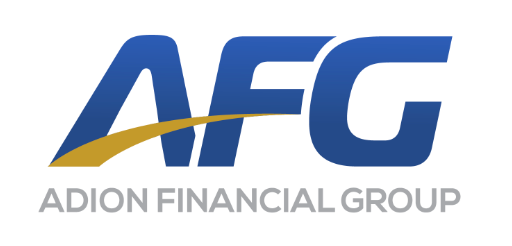
Top 3 Recommended Policies
In the evolving landscape of commercial real estate, triple net leases (NNN leases) have become a popular choice for investors and tenants alike, especially in markets like Connecticut. These leases shift many property-related expenses to tenants, creating a distinct insurance dynamic that both parties must understand thoroughly. This comprehensive guide explores everything you need to know about Connecticut triple net lease insurance, from market trends and lease structures to risk management and recent developments shaping the industry.
With Connecticut’s commercial real estate market experiencing a notable 10% increase in property transactions between 2021 and 2022, understanding the nuances of triple net lease insurance is more critical than ever for landlords and tenants aiming to protect their investments and operations. For more insights into Connecticut’s thriving market, visit The Exclusive Estate.
What Is a Triple Net Lease and Why Is It Popular in Connecticut?
A triple net lease is a lease agreement where the tenant agrees to pay all the ongoing expenses of the property, including real estate taxes, building insurance, and maintenance costs, in addition to the base rent. This structure contrasts with gross leases, where the landlord typically covers these expenses.
In Connecticut, the appeal of triple net leases lies in their ability to provide landlords with a stable, predictable income stream while shifting many financial responsibilities to tenants. This arrangement is particularly attractive in a market that values sustainability and adaptive use of commercial spaces, as noted by experts at The Exclusive Estate.
Moreover, the resilience of the net lease market, even amid broader economic shifts, has reinforced investor confidence. According to GlobeSt, net lease assets continue to attract capital due to their stable income streams and built-in inflation protection, making them a cornerstone of Connecticut’s commercial real estate sector.
Additionally, the flexibility that a triple net lease offers can be particularly beneficial in Connecticut's diverse economic landscape. Tenants often appreciate the transparency in costs, as they can better budget for their expenses without the uncertainty of fluctuating landlord charges. This clarity can lead to stronger tenant-landlord relationships, fostering a sense of partnership that can be advantageous in long-term lease agreements. Furthermore, as businesses increasingly seek to minimize overhead costs, the triple net lease structure allows them to tailor their financial commitments based on their operational needs.
The geographical advantages of Connecticut also play a significant role in the popularity of triple net leases. With its strategic location between New York City and Boston, the state attracts a variety of businesses looking to capitalize on the affluent consumer base and robust transportation networks. This influx of commercial activity has led to a heightened demand for retail and office spaces under triple net lease agreements, as investors recognize the potential for long-term value appreciation in these properties. As a result, many landlords are keen to offer such leases, knowing they can attract quality tenants who are eager to establish a presence in this economically vibrant region.

Understanding Insurance Obligations in Triple Net Leases
One of the most critical aspects of triple net leases is the insurance obligations placed on tenants. Typically, tenants are required to carry property insurance, liability insurance, and sometimes additional coverage to protect the landlord’s interests. This requirement not only safeguards the physical property but also ensures that any liabilities arising from accidents or damages are adequately covered, providing peace of mind for both parties involved in the lease.
However, landlords must carefully consider how they are named on these insurance policies. While landlords are often listed as "additional insured" on the tenant’s policy, this status may not provide the same level of protection as being a "named insured." As highlighted by Industrial Coverage, this distinction can have significant implications in the event of a claim, potentially leaving landlords vulnerable if coverage gaps exist. For instance, if a tenant's policy has exclusions or limitations that do not cover certain risks, landlords may find themselves at a financial loss if they are not adequately protected. This underscores the importance of thorough policy reviews and understanding the nuances of insurance language.
Therefore, landlords in Connecticut should work closely with insurance professionals to ensure their interests are adequately protected, possibly negotiating lease terms that require tenants to maintain certain coverage limits and types of insurance. This proactive approach can help mitigate risks and ensure that both parties have a clear understanding of their responsibilities. Additionally, landlords might consider conducting regular assessments of the insurance landscape to stay informed about changes in coverage options and emerging risks that could affect their properties.
Expense Caps and Insurance Costs
Tenants often seek to negotiate expense caps within triple net leases to avoid unexpected budget increases, especially concerning insurance premiums and property taxes. A common cap is a 3% annual limit on tax increases, which helps tenants manage their financial exposure over the lease term. This strategy not only provides a safety net against unpredictable market fluctuations but also allows tenants to allocate their resources more effectively, ensuring they can invest in their business operations without the fear of sudden financial burdens.
These caps are crucial in Connecticut’s market, where
rising insurance costs and property taxes can otherwise lead to significant financial strain for tenants. According to
Clients 1st Property Group, negotiating such caps is a prudent strategy for tenants aiming to maintain predictable expenses. Furthermore, tenants may also explore options for shared risk management initiatives with landlords, such as participating in group insurance plans or collaborating on property improvements that could lower overall insurance costs. By fostering a cooperative relationship, both parties can benefit from reduced expenses while enhancing the property's value and safety, ultimately leading to a more sustainable leasing arrangement.
Market Trends Impacting Triple Net Lease Insurance in Connecticut
Recent market data reveals several trends influencing how triple net lease insurance is approached in Connecticut. Notably, the average capitalization rates for retail net lease assets have increased to approximately 6.6% by the end of 2024, up from the previous 5% range. This shift reflects changing investor expectations and risk assessments in the commercial real estate sector, as reported by Brevitas.
Higher cap rates typically indicate increased perceived risk or changing market conditions, which can affect insurance requirements and costs. Landlords may demand more comprehensive insurance coverage from tenants or adjust lease terms to mitigate these risks. This adjustment in insurance coverage is particularly crucial as it can lead to higher premiums for tenants, who may need to reassess their financial strategies to accommodate these changes. Furthermore, landlords are increasingly seeking out insurance policies that not only cover property damage but also address potential liability issues that may arise from tenant operations.
Additionally, the trend toward shorter-term leases with renewal options is gaining traction, influenced by research from the University of North Carolina showing that 50% of small businesses fail within the first five years. This reality encourages landlords to offer more flexible lease terms, which can impact insurance planning and risk management strategies for both parties. As a result, tenants may find themselves needing to secure insurance that can adapt to fluctuating lease lengths and terms, potentially leading to more tailored insurance products that cater specifically to the unique needs of small businesses.
Decline in Eviction Lawsuits and Its Implications
Another notable development in Connecticut’s commercial real estate market is the decrease in summary process eviction lawsuits filed by landlords, dropping from 26,411 in 2016 to 21,198 in 2019. This decline suggests a more stable tenant-landlord relationship environment, possibly influenced by economic factors and evolving lease structures. The reduction in eviction lawsuits may also indicate that landlords are becoming more selective in their tenant choices, opting for tenants with stronger financial backgrounds and proven track records, which could further stabilize the market.
For insurance purposes, this trend may reduce the frequency of disputes related to lease defaults, but it also underscores the importance of clear insurance and lease terms to prevent conflicts. Both landlords and tenants benefit from transparent agreements that outline insurance responsibilities and risk-sharing mechanisms. Moreover, as the market evolves, there is a growing emphasis on the need for landlords to conduct thorough due diligence on potential tenants, ensuring that they are not only financially sound but also capable of maintaining the property adequately. This proactive approach can lead to fewer claims and a more harmonious landlord-tenant relationship, ultimately benefiting the insurance landscape as well.
Risk Management Strategies for Landlords and Tenants
Effective risk management is essential in triple net lease arrangements, especially in a market as dynamic as Connecticut’s. Landlords should ensure that tenants maintain adequate insurance coverage, including property, liability, and business interruption insurance. Regular reviews of insurance certificates and policy endorsements can help landlords verify compliance and address potential gaps. Additionally, landlords may want to conduct periodic inspections of the property to assess risk factors firsthand, ensuring that the physical condition of the premises aligns with the insurance coverage in place. This proactive approach not only mitigates risk but also fosters a stronger relationship between landlords and tenants, as it demonstrates a commitment to maintaining the property’s value and safety.
Tenants, on the other hand, need to understand their insurance obligations fully and negotiate terms that protect their interests without exposing them to excessive costs. This balance often involves working with brokers familiar with triple net leases and the local market nuances. Tenants should also consider the potential for future expansions or changes in business operations, which may necessitate adjustments to their insurance policies. Engaging in open dialogue with landlords about these potential changes can lead to mutually beneficial arrangements that accommodate both parties' needs while ensuring comprehensive coverage.
Moreover, both parties should consider the implications of being named insured versus additional insured on policies, as this can affect claims handling and coverage scope. Consulting legal and insurance experts can clarify these distinctions and help tailor lease agreements accordingly. It is also vital for both landlords and tenants to keep abreast of any changes in local laws or regulations that could impact their insurance requirements, as these can evolve and introduce new risks or obligations that require immediate attention.
Adapting to Market Changes and Insurance Innovations
Connecticut’s commercial real estate market is increasingly emphasizing sustainable, adaptive, and flexible use of spaces. This shift affects insurance considerations, as properties may require specialized coverage for green building features, adaptive reuse, or evolving tenant operations. For instance, properties that incorporate renewable energy sources or eco-friendly materials may benefit from specific endorsements that cover potential liabilities associated with these innovations. Understanding these nuances can help both landlords and tenants leverage the benefits of sustainable practices while safeguarding against unforeseen risks.
Landlords and tenants should stay informed about insurance products that address these emerging risks and opportunities. For example, policies that cover environmental liabilities or offer endorsements for new technologies can provide valuable protection in a changing market. Additionally, as the trend toward remote work and hybrid business models continues to grow, insurance products that cater to the unique needs of tech-driven operations or flexible office spaces are becoming increasingly relevant. Keeping an eye on these trends can help both parties make informed decisions that not only protect their investments but also position them favorably in a competitive landscape.

Conclusion: Navigating Connecticut Triple Net Lease Insurance with Confidence
Triple net leases offer a compelling model for commercial real estate in Connecticut, balancing risk and reward for landlords and tenants. However, the insurance aspects of these leases require careful attention to detail, clear communication, and ongoing management to ensure both parties are adequately protected.
By understanding the market trends, insurance obligations, and risk management strategies outlined in this guide, stakeholders can navigate the complexities of triple net lease insurance with greater confidence. Staying informed about local market conditions, such as the recent increase in capitalization rates and the decline in eviction lawsuits, further empowers landlords and tenants to make sound decisions.
For those seeking deeper insights into the resilience and future outlook of net lease investments, resources like
GlobeSt provide valuable perspectives on the evolving landscape.
Contact Us
Phone
Locations
Connecticut Location
703 Hebron Ave., 3rd Floor, Glastonbury, CT 06033
North Carolina Location
436 East 36th St., Charlotte, NC 28205


